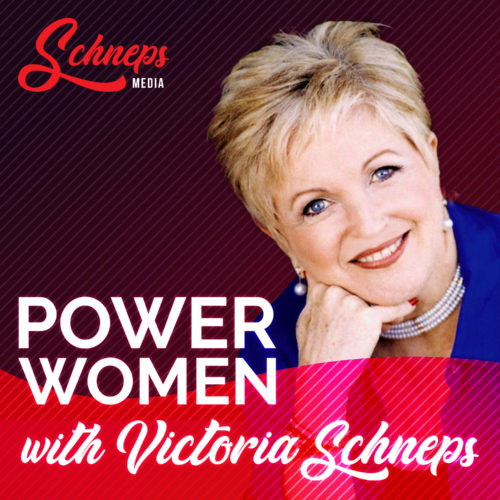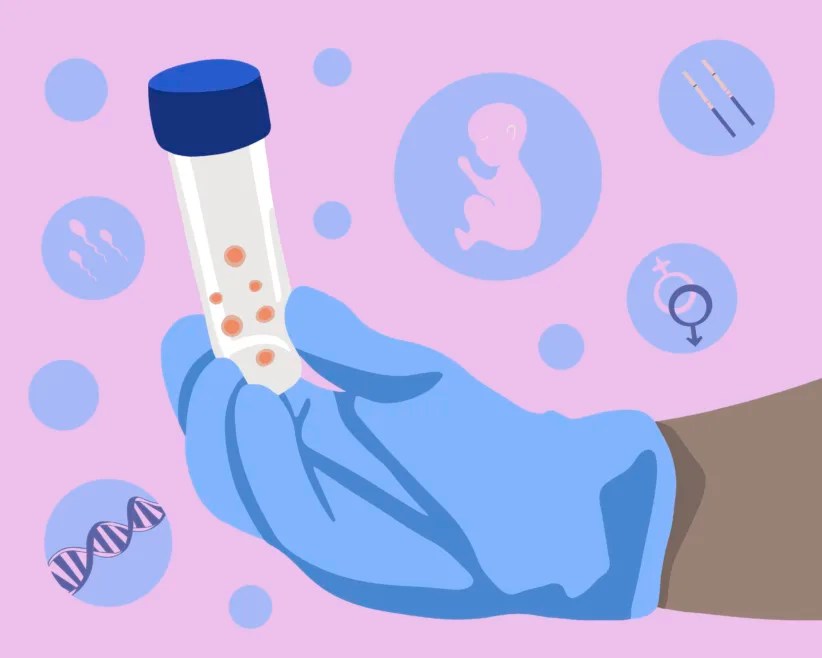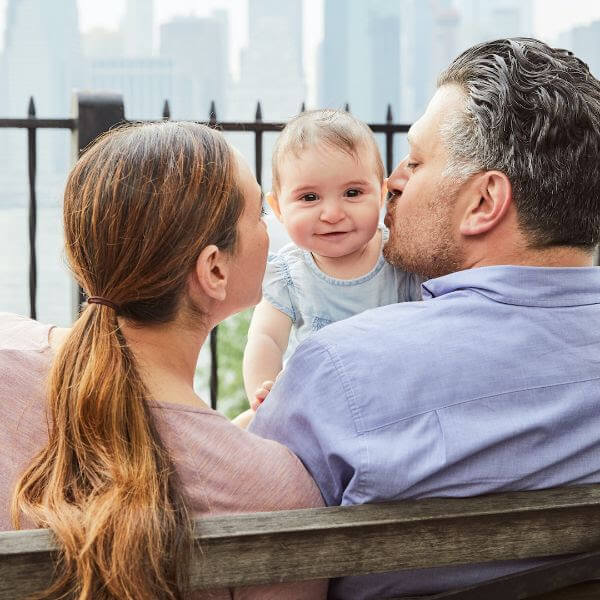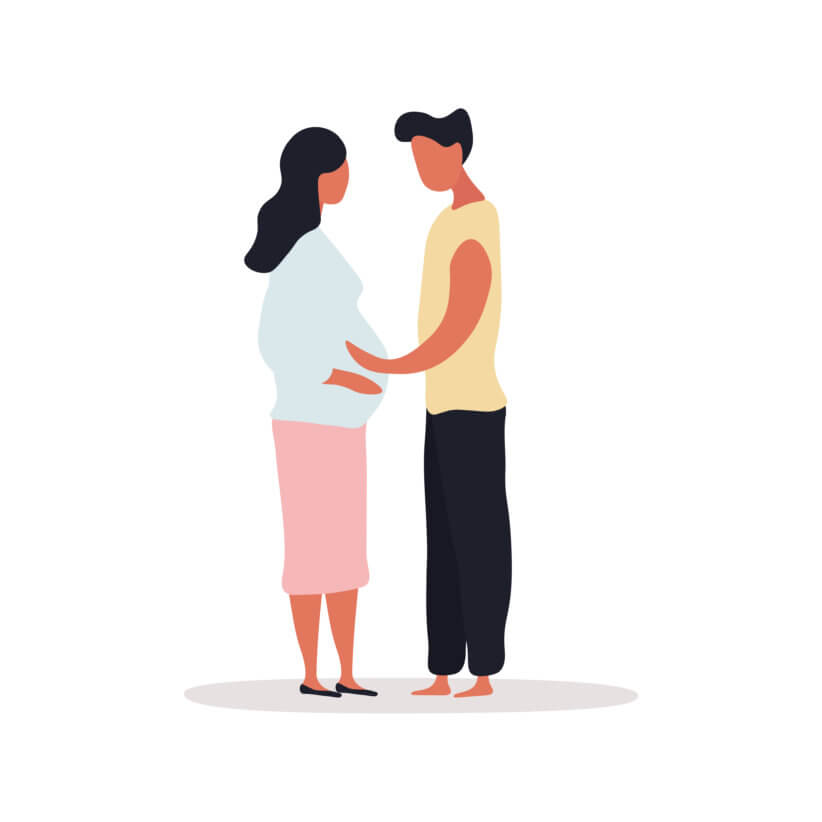Famous people get pregnant and have children all the time, but not many do so at the age of 50.
Enter Sophie B. Hawkins.
The American singer, songwriter, and musician, announced in February that she is pregnant and is expecting to deliver her baby girl in July 2015.
Hawkins, whose hits include “As I Lay Me Down,” said that in order to become pregnant, she used in vitro fertilization (IVF), which involves combining a woman’s eggs and a man’s sperm outside of the body in a laboratory. Once an embryo or embryos form, they are then placed inside a woman’s uterus.
In Hawkins’ case, she used 15 frozen embryos that had been created with donor sperm when she was 31 years old. As reproductive technologies have advanced, opportunities for women to have children at an older age have become more available.
According to statistics from the Centers for Disease Control and Prevention, births by women ages 50 to 54 rose by more than 165 percent from 255 such births in 2000 to 677 in 2013.
Dr. Jamie Grifo, program director of the New York University Langone Fertility Center and a reproductive endocrinologist, explained that most of these mothers conceived children by using donor eggs fertilized by sperm and implanted into the womb.
As the average age for menopause is 51, fertility decreases through a woman’s 30s and 40s and usually vanishes by 45.
“Egg donors are not a new trend. There are a limited number of patients over the age of 50 who use assisted reproduction, mostly donor eggs,” said Grifo. “There have been no reported pregnancies in women over 50 doing IVF with their own eggs, as the pregnancies of women 45 and older are almost always achieved using donor eggs. An egg donor cycle (starting with egg production and ending with an embryo transfer) can cost $20,000 to $30,000,” Grifo stated.
The mothers themselves must meet certain criteria to be considered for IVF at an older age. In addition to having a normal blood pressure and weight, prospective mothers must undergo an electrocardiogram that checks for problems with the electrical activity of the heart, a stress test for the heart, a colonoscopy, and a mammogram.
The Centers for Disease Control list some of the risks involved for women in their late 40s and 50s having children as preeclampsia (a condition during pregnancy marked by high blood pressure and a high level of protein in the urine), gestational hypertension, diabetes, preterm delivery, and multiple births.
NYU’s website (www.nyula
When asked if women 50 and older having babies is a rising trend, Grifo observed, “It’s happening, but it’s still not that common. The age of first deliveries is rising dramatically, especially on the coasts, just because the stages of our life expand with our life expectancy, so we spend more time in each of the stages.”
Based on a 2011 research paper published by his colleagues at New York University, Grifo said, “We looked at eggs, embryos, frozen eggs, fresh eggs and embryos and showed that per retrieval, we got the same pregnancy rate. There are advantages and disadvantages to each option and with good counseling and informed consent, patients can decide what to do.”
Because frozen embryos involve donor sperm or the sperm from a male partner, not all patients are comfortable freezing embryos, because they may never be used if the woman separates from her partner. The woman can only use the embryo with the male partner’s consent.
It is illegal to sell frozen eggs and embryos and donating them involves costly testing on the donors’ behalf, which usually ends up having them forgo the procedures and throw the reproductive materials away.
Dr. Barry Behr, professor of obstetrics and gynecology (reproductive endocrinology and infertility) at Stanford University’s Medical Center, disagrees with Grifo’s conclusion that almost all assisted reproductive technologies have about the same pregnancy rates.
An example Behr refers to can be found online at the Society for Assisted Reproductive Technology (www.sart.org.) under the heading “IVF Success Rates” that produces a “National Data Summary” from 2013, which is a compilation of statistics from fertility centers throughout the country. The website also allows users to look at the data of individual fertility clinics nationwide, although it is not designed to compare IVF clinics’ success rates.
According to the National Data Summary, the percentage of transfers resulting in live births is 56.1 percent for fresh embryos, 47.1 percent for frozen donor eggs, 40.5 percent for thawed embryos, and 41 percent for donated embryos. These statistics show the highest success rate is by using fresh embryos. There is a 9 percent lower success rate from using frozen donor eggs than using fresh donor eggs (in fresh embryos).
Behr also says that fresh embryos and eggs have higher success rates than frozen embryos and eggs.
“There is nothing in life where fresh is the same or worse than frozen. You can look at published data. Pregnancy rates are 10 percent to 20 percent lower with frozen eggs cycles than they are with fresh egg cycles.”
Regarding the use of eggs versus embryos, Behr sees different success rates as well.
“Pregnancy rate does not mean that the techniques are equivalent. It’s not arithmetically possible to have eggs be equal to embryos. Eggs are more fragile than embryos, so there is a slightly lower survival rate in eggs than embryos. One egg going in does not translate to one embryo developed,” Behr explains.
“Not every egg fertilizes,” he continues. “That means that if 60 percent to 70 percent of your eggs survive and fertilize, the utility of eggs starting with 10, we’re now down to six to seven embryos. If I start with ten embryos, I bet that I will have more babies from my ten embryos than from your 10 eggs. “
Saying that he fully supports egg-freezing, Behr believes this technique has advantages over embryo-freezing. For example, if a single woman wants a child, but doesn’t have a partner, she can freeze her eggs until she decides when she wants to conceive. If she finds a partner, she can use her eggs and her partner’s sperm to create an embryo. She also has the option of using donor sperm to create the embryo.
Other instances where egg-freezing is advantageous is when a female cancer patient wishes to bank her eggs. Egg-freezing is also a more viable alternative for those who have moral or ethical concerns about storing extra embryos after in vitro fertilization.
Behr says the data from the Society for Assisted Reproductive Technology for 2011 and 2012 shows greater disparity in success rates among the different technologies.
“Now I’m not saying in five years or 10 years those success rates may be closer, but the success rate of an embryo will always be higher than that of an egg, because you don’t know the potential of an egg before it is fertilized today.”
In an interview with ABC Television in 2012, Behr said it was “morally irresponsible” to tell a couple about freezing eggs but not disclose to them about freezing embryos.
Behr says he has softened his position on being “morally irresponsible,” but he claims there are fertility centers and individuals “who are morally irresponsible and who are selling people on false hope and that is immoral and unethical. This would not be the case for Dr. Grifo’s nor our practice. Neither myself nor Dr. Grifo represent our field in parity.”
For more information about in vitro fertilization, visit NYU’s Langone Fertility Center website at www.nyula
Allison Plitt is a contributing writer to New York Parenting and lives in Queens with her husband and daughter.






















